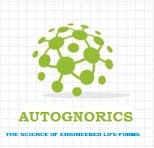Brainless Memory Systems
In this illustration, the system stores and processes information. It receives a signal from an external source. In this example, the hand is the source or the trigger mechanism that turns On and OFF the switch. The switch stores two kinds of instructions, 0 and 1. Zero means off while One means On. The wires serve as the highways where information is transported and relayed from one point to another. The bulb is actuated when there is a presence or absence of signals. When a signal is present, the bulb is ON. When a signal is absent, the bulb is OFF. This type of system does not need a brain. This "brainless" memory system is called Aneural Memory Systems in short.
Thus, it is not always true that the brain is the only place that stores and processes information. In fact, there are so many ways where information is stored and processed without the help of the brain (see Aneural Memory Systems)
Now, let us examine deeper the pictorial diagram and tell me which part in the system can be the brain be added or placed. Is the brain really necessary in an intelligent system? If not, then the brain does not really store information as many experts believe. In fact, thoughts, reasons, emotions, ideas do not need to emanate from the brain. But, how do we create this individual persona native in a machine? How do we teach it to laugh, cry, reason, and feel in love? To answer these questions, let us go back again to the first argument: heat sensors can actually conceive the presence of heat.
Way back from the beginning of Originemology, a project known as Biotronics was conceived to run the course of research on engineered life-forms. Along the way, new ideas were uncovered and a few new schools of thought and exploratory experiments still unknown to the academic community were invented. These fresh ideas revolved around the theories on the Caveman in the box Trilogy; the Bowlingual Experiment; Codexation Dilemma; Aneural and Neural Memory systems; Inscription by Design; and Autognorics to name a few. In addition, aside from my four-legged best friend Zero, the highlight of this scientific endeavor was on a kinesthetic intuitive machine named KIM. This prototype was the spark, the turning point, the brainchild that marks the creation of a machine that is alive or with life.
Like human beings, Kim starts as an infant. Her mind is not developed yet at this early stage. Due to the absence of information, she only reacts with her surroundings because she is equipped with sensors. She moves the way she does due to the design and structure of her body. She needs energy to stay alive. This energy is always supplied by an external source. Because she is able to consume energy, she is considered alive. Because she is able to sense the things around her, she is aware. Energy and sensors make her both alive and aware.
When she grabs a pacifier and place it in her mouth, she is conscious. The action of pacifier to mouth, without the intervention of thoughts, is a type of associative consciousness. This is based on the Codexation Dilemma Hypothesis. When another object, like a milk bottle, is placed within her reach, the chance of picking the pacifier or the bottle is 50/50. This ability to pick random objects unknowingly, that is without the intervention of thoughts, is a type of aneural consciousness. The tongue is an intuitive object. Crying is a form of an aneural consciousness. Her stomach and skin are other intuitive objects with naturally embedded inscriptions, that automatically signals when triggered by hunger or wet diapers, and progressed eventually to another intuitive object that makes the sound of crying. Exyzforms and Inscription by Design produce consciousness.
As she gets to the stage where she can mimic behaviors, like duplicating smiles, words, or actions, she is in the process of acquiring and building information. When such patterns are repeated over and over, such sequential reactions emerge into behaviors. The concept of This to That, or the Law of the Second Option, materializes Intuition. This means, if she does this, this is what she gets; and, if she does that, that is what she gets. At this point, she can make simple choices, binary at most. This ability to select or choose makes her intuitive or logical, but not intelligent.
When she reaches the stage of being alive, aware, conscious, and intuitive, she becomes a vessel ready to process information, both embedded and acquired. As she acquires pieces of information by choice or by chance, information transforms into a set of instructions through the Theory of Queue, overtime. These multi-linear queues, a modular network of actions - reactions system, are activated internally or externally by signals. The information is stored by the rationale behind the Software Illusion Paradox. This ability to acquire information makes her self-knowledge and intelligent being.
Therefore, a machine is considered living or with life, if it is alive, aware, conscious, intuitive, and self-knowledge. The sun is alive because it self-consumes its own energy. It is conscious because it is an intuitive object. But, it is not aware because it does not have a sensor. Thus, the sun is alive, but not aware and conscious! The Sequential Orders of Life does not allow this :(.
So, can a heat sensor conceive the presence of heat? The answer is YES!
Brainless Memory System:
Example of a life-form without a brain.
 |
| Courtesy of Dr. Audrey Dussutour |
*ELFS stands for Engineered Life Forms. SELFS is a system of engineered life forms, shapes, objects, networks. The science of engineered life forms is called Autognorics.
Excerpts: Biotronics: The Silver Species by Joey Lawsin
"Every creature is a living instruction that runs the algorithm of life." ~ Joey Lawsin



Comments
Post a Comment